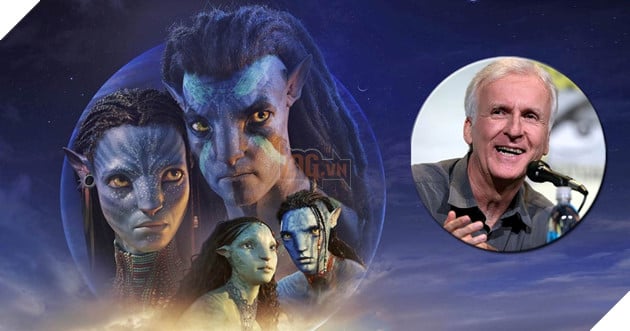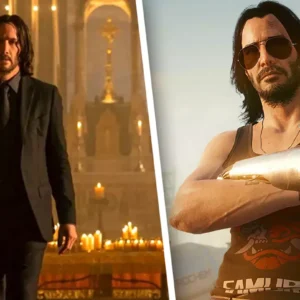At the D23 Expo in August 2024, James Cameron, the visionary director behind the Avatar franchise, revealed the official title and main concept of the highly anticipated third installment, Avatar: Fire and Ash. Set to release on December 19, 2025, this film promises to take audiences deeper into the world of Pandora, introducing new Na’vi cultures, complex moral dynamics, and heightened emotional stakes. Cameron’s revelations, coupled with stunning concept art, have sparked excitement among fans and critics alike, offering a glimpse into a darker, more intricate chapter of the Avatar saga that challenges the simplistic good-versus-evil narratives of its predecessors.
The Avatar franchise has been a cinematic juggernaut since its debut in 2009, with the original film grossing $2.9 billion and becoming the highest-grossing movie of all time, a record it still holds. Its sequel, Avatar: The Way of Water, released in 2022, followed suit, earning $2.3 billion and securing the third spot on the all-time box office list. These successes have set a high bar for Avatar: Fire and Ash, but Cameron’s ambitious vision for the threequel suggests he’s ready to push the boundaries even further. Speaking at D23 alongside stars Sam Worthington and Zoe Saldaña, Cameron teased that the film will explore uncharted territories of Pandora while delving into the emotional and moral complexities of its characters, particularly through the introduction of the Ash People—a Na’vi clan that embodies fire, hatred, and violence.
The main concept of Avatar: Fire and Ash, as revealed by Cameron, centers on the elemental theme of fire and its symbolic representation of anger, violence, and hatred, contrasted with ash as the aftermath—grief, loss, and the cycle of retribution that follows. Cameron explained to Entertainment Weekly that the title reflects a vicious cycle: “If you think of fire as hatred, anger, violence, that sort of thing, and ash is the aftermath. So what’s the aftermath? Grief, loss, right? And then what does that cause in the future? More violence, more anger, more hatred.” This thematic framework marks a significant departure from the earlier films, which largely portrayed the Na’vi as noble and harmonious, while humans, particularly the Resources Development Administration (RDA), were the clear antagonists. In Avatar 3, Cameron aims to flip this dynamic, showing a darker side of the Na’vi through the Ash People, a volcanic race led by the fearsome Varang, played by Oona Chaplin.
The Ash People, described by Cameron as a clan hardened by incredible hardship, represent a morally ambiguous take on the Na’vi. Unlike the jungle-dwelling Omaticaya clan from the first film or the aquatic Metkayina clan from The Way of Water, the Ash People are aggressive and drawn to power, often resorting to violence in ways that other Na’vi clans would find unheroic. Concept art showcased at D23 and later at D23 Brazil depicted the Ash People dancing around a giant fire pit, their bodies covered in ghost-like soot and wearing otherworldly masks, creating an eerie and menacing image. Cameron elaborated to Empire magazine that Varang, the leader of the Ash People, is a complex figure who “will do anything for her people, even things that we would consider to be evil.” This nuanced portrayal aims to evolve beyond the binary “all humans are bad, all Na’vi are good” paradigm, introducing a layer of moral complexity that challenges both the characters and the audience to grapple with the consequences of hardship and loss.

The emotional core of Avatar: Fire and Ash will focus on the Sully family—Jake (Sam Worthington), Neytiri (Zoe Saldaña), and their children—as they navigate the aftermath of the tragedy they suffered in The Way of Water, where their eldest son, Neteyam, was killed during the RDA’s assault on the Metkayina clan. Zoe Saldaña, speaking to CBR, hinted that the film will chronicle the family’s “journey of acceptance,” suggesting a potential tear-jerker for audiences. Cameron has emphasized that this installment will delve deeper into character development, prioritizing emotional stakes over spectacle. “The big creative advance in this movie is just going to be greater character depth,” he told GQ. “It’s not about, ‘We’re going to show you the best water VFX ever done’—but you get more into the heart and soul of the characters.” This focus is underscored by Cameron’s decision to shift the narration from Jake to Lo’ak, the younger Sully son, who emerged as a fan-favorite in the second film. Cameron revealed on the Soundtracking with Edith Bowman podcast that Lo’ak’s perspective will offer a fresh lens on the family’s journey, a creative choice influenced by audience feedback.
Beyond the Ash People, Avatar: Fire and Ash will introduce another new Na’vi culture: the Wind Traders, a nomadic tribe that travels through the air on large, corral-like Pandoran creatures. Cameron described them to Empire as “equivalent to the camel caravans of the Spice Road back in the Middle Ages,” living in symbiosis with their flying creatures. Concept art revealed at D23 Brazil showcased their flying vehicles soaring among the clouds, as well as vibrant water scenes that hint at the continued exploration of Pandora’s diverse biomes. Cameron’s goal is to show “a lot more of Pandora that you’ve never seen before,” as he stated at D23, promising an “insane adventure and a feast for the eyes” alongside the high emotional stakes.
The film’s production has been a monumental undertaking, shot back-to-back with The Way of Water starting in 2017, with principal photography wrapping in 2018 for the main cast, including Worthington, Saldaña, Sigourney Weaver (returning as Kiri), and Stephen Lang (as Colonel Miles Quaritch). Additional filming took place in early 2024, with Cameron confirming in February that the film was 95% complete. Now in post-production, Avatar: Fire and Ash is expected to run longer than The Way of Water’s three hours and 12 minutes, a length that Cameron has defended by pointing to modern viewing habits. The film’s runtime, combined with its emotional intensity, has already made an impact—Cameron shared with The Guardian that his wife, Suzy Amis Cameron, watched an unfinished version on December 22, 2024, and “bawled for four hours,” struggling to articulate her reactions through her tears.
The cast of Avatar: Fire and Ash is a blend of returning favorites and new faces. Alongside Worthington, Saldaña, Weaver, and Lang, the film features Britain Dalton as Lo’ak, Trinity Jo-Li Bliss as Tuk, and Jack Champion as Spider, with new additions like David Thewlis and Oona Chaplin as Varang. The production also marks a bittersweet milestone following the passing of longtime producer Jon Landau in July 2024, with Cameron dedicating the film to his memory. Cameron’s commitment to the franchise remains unwavering—he has confirmed plans for Avatar 4 and Avatar 5, set for release in 2029 and 2031, respectively, and has even hinted at potential sequels beyond that, though he acknowledges the financial risks given the high cost of production.
Avatar: Fire and Ash is poised to be a pivotal chapter in the Avatar saga, one that challenges the moral simplicity of its predecessors while expanding the visual and emotional scope of Pandora. Cameron’s focus on the darker aspects of the Na’vi, the Sully family’s grief, and the introduction of new cultures like the Ash People and Wind Traders suggests a film that will test the bonds of its characters and leave audiences both awestruck and moved. As Cameron continues to refine the film in post-production, fans eagerly await their return to Pandora, ready to experience the “tougher ride” he has promised—one that will likely redefine the legacy of this groundbreaking franchise.




